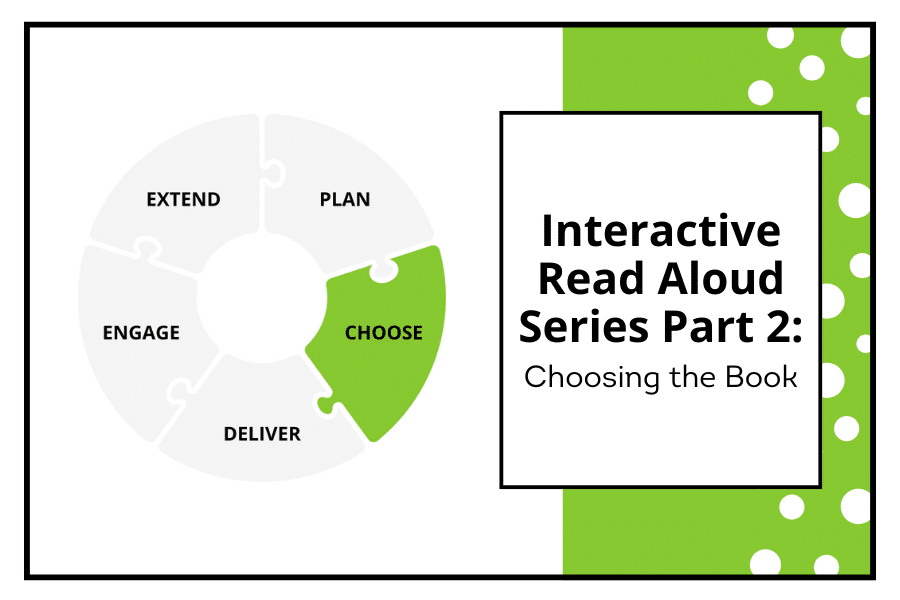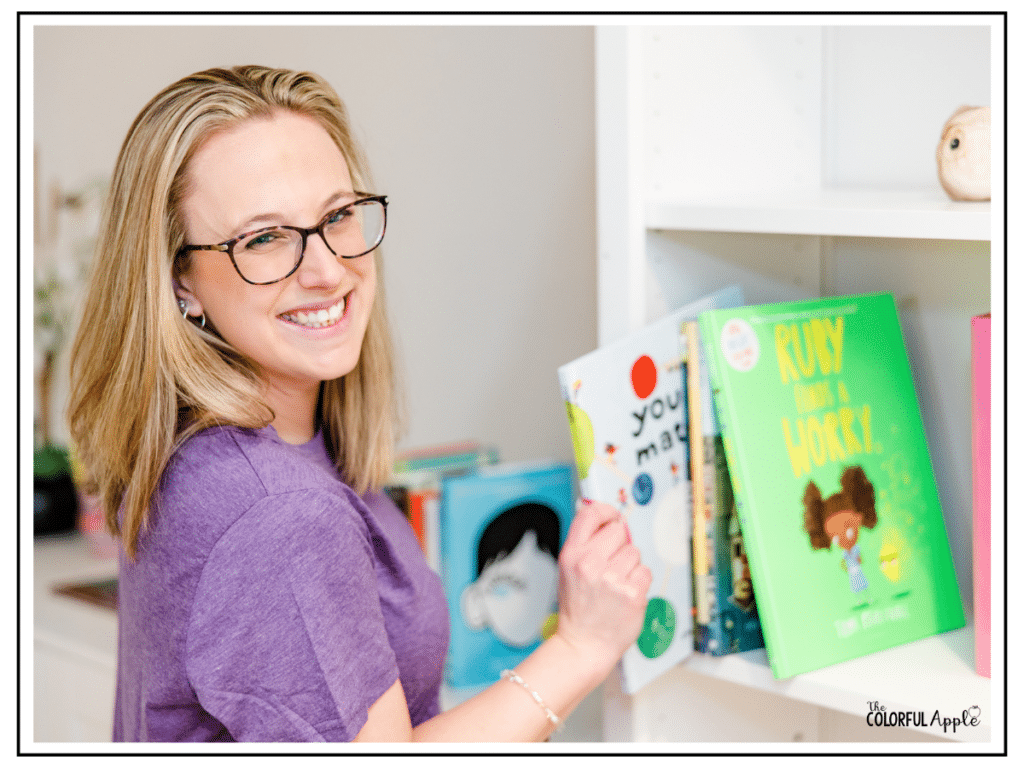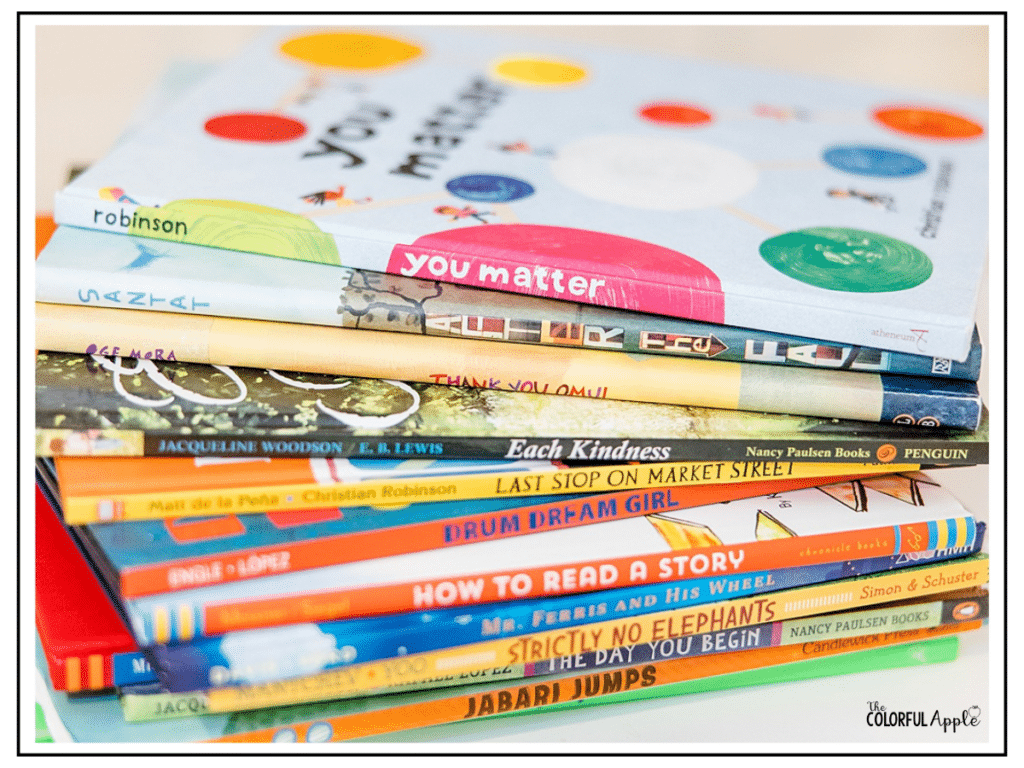Interactive Read Aloud Series Part 2:
How to Choose a Book for Your Read Aloud

We’ve all been there – standing in front of our classroom library, staring at hundreds of books, wondering which one to choose for tomorrow’s read aloud. Maybe you’ve even done what I’ve done – grabbed a book off the shelf at the last minute, only to realize halfway through that it just wasn’t the right fit for your lesson. Today, I want to share some game-changing strategies for how to choose a book for your interactive read alouds.
Why Book Selection Matters
Interactive read alouds are incredibly powerful teaching tools. When you have a quality book and an effective lesson, you get so much bang for your buck! Our students are usually captive audiences during read alouds, which gives us this amazing opportunity to build and deepen their comprehension skills. But it all starts with choosing the right book. Let’s talk about how to choose a book for your read aloud lessons.

5 Essential Questions: How to Choose a Book
1. Will this book's storyline or topic be interesting to my students?
Look for high-quality books with enough complexity to spark curiosity and engagement. For our younger readers, this might mean books with engaging illustrations and relatable situations. For older students, look for stories that prompt deeper thinking and discussion.
When it comes to nonfiction, I’ve learned to look for books that read more like stories rather than just being packed with facts. We want to inform without overwhelming. The best nonfiction read alouds build knowledge while maintaining student interest.
2. Does this book mirror my students and offer windows to them?
I love Dr. Rudine Sims Bishop’s concept about books being both mirrors and windows. We want our students to see themselves, their families, and their experiences reflected in the books we choose. This validation is crucial for building confidence and engagement.
But equally important are the “window” books – stories that give our students glimpses into different lives and experiences. These books are powerful tools for building empathy and understanding. When students can see both themselves AND others in our book choices, magical things happen in our classroom communities.
3. Does this book help me teach the reading skill or strategy I'm targeting?
This is where intentional selection becomes crucial. Different books lend themselves to different teaching points:
- For visualization: Look for rich descriptive language
- For making inferences: Choose books with layered meanings or subtle character development
- For making connections: Select stories with universal themes or relatable situations
- For teaching main idea: Find books with clear central messages but enough complexity to make students think
4. Does this book have rich vocabulary?
With all we know from the science of reading research, vocabulary instruction is absolutely crucial. I aim to find books that have between four to eight rich vocabulary words we can explore deeply. But it’s not just about learning new words – it’s about understanding why authors choose specific words and how we can use them ourselves.
Look for books where the vocabulary:
- Is natural and meaningful to the story
- Can be understood through context
- Offers opportunities for discussion and application
- Appears in situations students might encounter
5. Is this book on my students' listening level?
Here’s something exciting – research shows that students can usually comprehend texts up to three grade levels above their reading level when they’re read aloud! However, we still need to make sure the concepts and ideas are accessible to our students.
Deeper Selection Criteria for Powerful Read Alouds
Beyond these basic questions, consider choosing books that:
Support Various Learning Goals
- Present different cultures and perspectives
- Help students understand how people handle life’s challenges
- Address age-appropriate issues like friendship, family, and peer pressure
- Include engaging language patterns (especially important for younger readers)
Offer Genre Variety
Don’t limit yourself to just fiction! Try:
- Pairing fiction and nonfiction on the same topic
- Including poetry and articles
- Creating text sets around themes or authors
- Using informational texts strategically
Connect to Curriculum
Look for books that can serve multiple purposes. For example, a book that teaches both a comprehension strategy AND connects to your social studies unit is pure gold! This kind of intentional selection helps us make the most of our precious instructional time.

Making It Manageable
I know what you might be thinking – this sounds great, but when are we supposed to find time to look through all these books? Trust me, I get it! That’s why I recommend:
- Building your collection gradually
- Taking notes on books as you read them
- Creating a simple system for organizing books by teaching point
- Collaborating with grade-level teammates to share resources
- Using trusted book lists and recommendations
Final Thoughts
Remember, taking the time to choose the right book isn’t just one more thing on your to-do list – it’s an investment that makes everything else in your lesson more powerful and engaging. The perfect book can transform a good read aloud into an amazing learning experience.